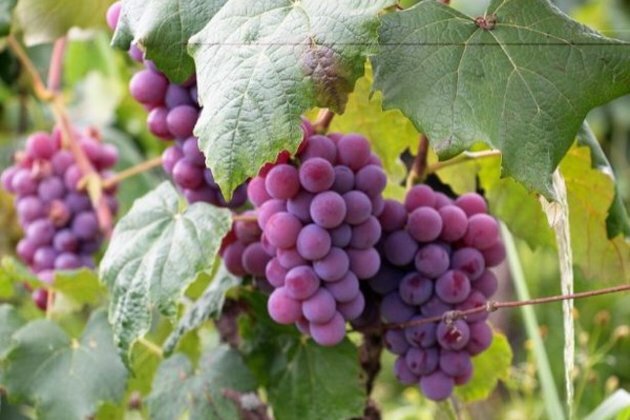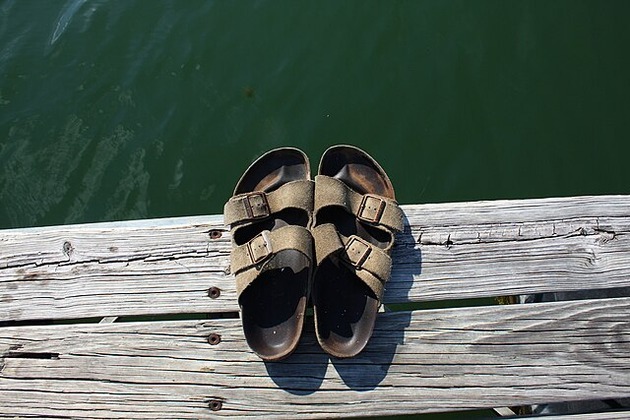New vine fossil identified as new species
ANI
08 May 2021, 09:25 GMT+10

Washington [US], May 8 (ANI): An 18.5 million-year-old fossil found in Panama researchers at the Cornell University provides evidence of a new species and is the oldest reliable example of a climbing woody vine known as a liana from the soapberry family. The discovery sheds light on the evolution of climbing plants.
The new species, named Ampelorhiza heteroxylon, belongs to a diverse group of tropical lianas called Paullinieae, within the soapberry family (Sapindaceae). More than 475 species of Paullinieae live in the tropics today.
Researchers identified the species from fossilized roots that revealed features known to be unique to the wood of modern climbing vines, adaptations that allow them to twist, grow and climb.
The study, "Climbing Since the Early Miocene: The Fossil Record of Paullinieae (Sapindaceae)," was published in the journal PLOS ONE.
"This is evidence that lianas have been creating unusual wood, even in their roots, as far back as 18 million years ago," said wood anatomist Joyce Chery '13, assistant research professor in the School of Integrative Plant Science, Plant Biology Section, in the College of Agriculture and Life Sciences, and a corresponding author of the paper.
"Before this discovery, we knew almost nothing about when or where these lianas evolved or how rapidly they diversified," said first author Nathan Jud, assistant professor of plant biology at William Jewell College and a former Cornell postdoctoral researcher.
Panama was a peninsula 18.5 to 19 million years ago, a volcanic landscape covered with tropical forest in North America and separated from South America by a Central American seaway. While these forests contained North American animals, the plants mostly descended from South American tropical plants that had dispersed across the seaway, Jud said.
"The fossil we described is the oldest macrofossil of these vines," he said, "and they were among the plants that made it to North America long before the Great American Biotic Interchange when large animals moved between the continents some 3 million years ago."In the study, the researchers made thin slices of the fossil, examined the arrangements and dimensions of tissues and water-conducting vessels under a microscope and created a database of all the features. They then studied the literature to see how these features matched up with the living and fossil records of plants.
"We were able to say, it really does look like it's a fossil from the Paullinieae group, given the anatomical characteristics that are similar to species that live today," Chery said.
During their analyses, the researchers identified features that are characteristic of lianas. Most trees and shrubs have water-conducting tissues (which transport water and minerals from roots to leaves) that are all roughly the same size when viewed in a cross-section; in vines, these conduits come in two sizes, big and small, which is exactly what the researchers discovered in the fossil.
"This is a feature that is pretty specific to vines across all sorts of families," Chery said.
The two-vessel sizes provide insurance for a twisting and curving plant, as large vessels provide ample water flow, but are also vulnerable to collapse and develop cavities that disrupt the flow. The series of smaller vessels offer a less vulnerable backup water transport system, Chery said.
Also, cross-sections of the wood in trees and shrubs are circular, but in the fossil, and in many living vines, such cross-sections are instead irregular and lobed.
Thirdly, on the walls of those vascular vessels, they found long horizontal perforations that allow for water to flow in lateral directions. That is a distinguishing feature of lianas in the soapberry family, Chery said.
In future work, now that they can place the lianas of Sapindaceae to 18.5 million years ago, the researchers intend to continue their investigation of the evolutionary history and diversification of this family. Chery also plans to investigate how wood has evolved in this group of vines, including identifying the genes that contribute to lobe-shaped stems. (ANI) Share
Share
 Tweet
Tweet
 Share
Share
 Flip
Flip
 Email
Email
Watch latest videos
Subscribe and Follow
Get a daily dose of Argentina Star news through our daily email, its complimentary and keeps you fully up to date with world and business news as well.
News RELEASES
Publish news of your business, community or sports group, personnel appointments, major event and more by submitting a news release to Argentina Star.
More InformationInternational
SectionDeadly July 4 flash floods renew alarm over NWS staffing shortages
WASHINGTON, D.C.: After months of warnings from former federal officials and weather experts, the deadly flash floods that struck the...
Putin fires transport chief, later found dead in suspected suicide
MOSCOW, Russia: Just hours after his sudden dismissal by President Vladimir Putin, Russia's former transport minister, Roman Starovoit,...
Thousands gather in Himalayas as Dalai Lama celebrates 90th birthday
DHARAMSHALA, India: The Dalai Lama turned 90 on July 6, celebrated by thousands of followers in the Himalayan town of Dharamshala,...
Fans perform WWII-era Fascist salute at Marko Perković’s mega concert
ZAGREB, Croatia: A massive concert by popular Croatian singer Marko Perković, known by his stage name Thompson, has drawn widespread...
U.S. Treasury Secretary says Musk should steer clear of politics
WASHINGTON, D.C.: Elon Musk's entry into the political arena is drawing pushback from top U.S. officials and investors, as his decision...
TikTok building U.S.-only app amid pressure to finalise sale
CULVER CITY, California: TikTok is preparing to roll out a separate version of its app for U.S. users, as efforts to secure a sale...
Business
SectionBRICS issues rebuke on trade and Iran, avoids direct US criticism
RIO DE JANEIRO, Brazil: At a two-day summit over the weekend, the BRICS bloc of emerging economies issued a joint declaration condemning...
BP appoints ex-Shell finance chief Simon Henry to board
LONDON, U.K.: This week, BP appointed Simon Henry, former Shell finance chief, to its board as a non-executive director effective September...
FedEx, UPS step up as Canada Post loses market share in strikes
OTTAWA, Canada: With Canada Post struggling to maintain operations amid labour unrest, rivals like FedEx and UPS are stepping in to...
U.S. stocks steady Tuesday despite tariffs turmoil
NEW YORK, New York - U.S. and global markets showed a mixed performance in Tuesday's trading session, with some indices edging higher...
Beijing blamed for covert disinformation on French fighter jet Rafale
PARIS, France: French military and intelligence officials have accused China of orchestrating a covert campaign to damage the reputation...
Birkenstock steps up legal battle over fakes in India
NEW DELHI, India: Birkenstock is stepping up its efforts to protect its iconic sandals in India, as local legal representatives conducted...













